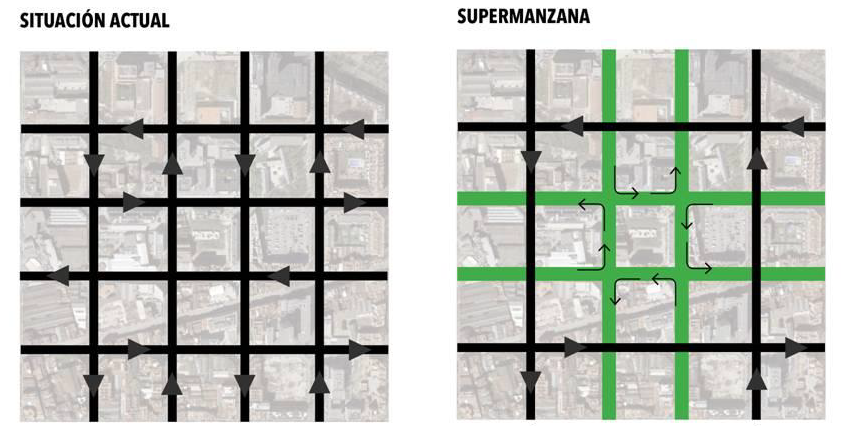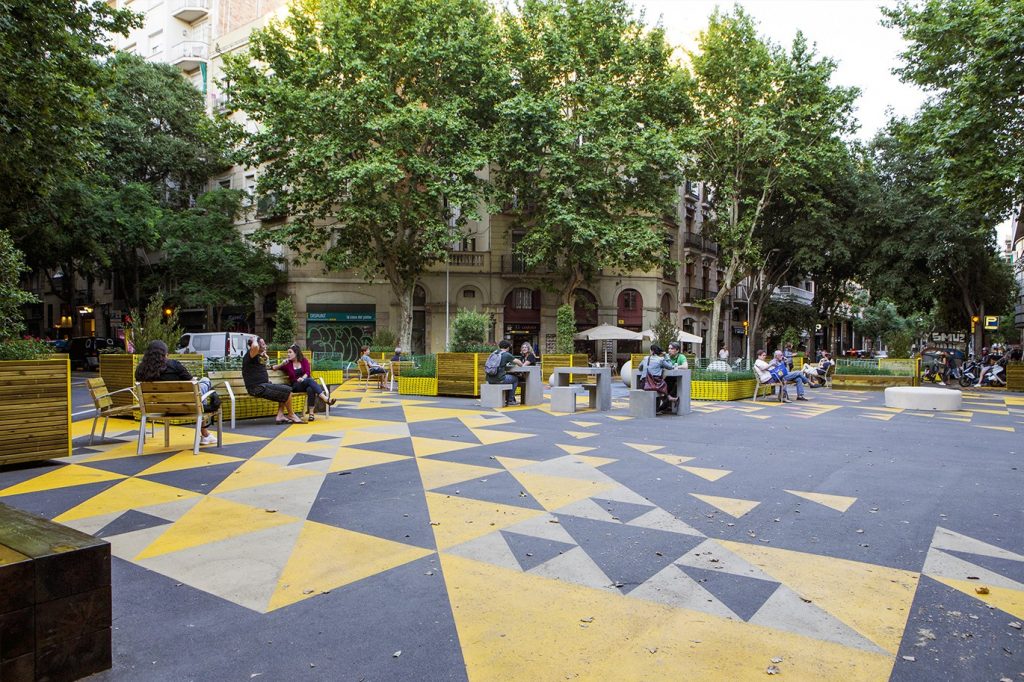María Ángeles Arenas López
The health crisis produced by the COVID-19 pandemic is causing one of the greatest challenges for society in the last century worldwide. Living together and dealing with its effects has made us constantly reflect on the safety of our environment and rethink changes in vital aspects of how and where we live or move.
A key factor in the impact of COVID-19 resides in the environmental deterioration in cities. The scientific community for decades has warned about the evidence that today links the health crisis with the environmental one1. The systematic loss of biodiversity as a result of climate change and the overexploitation of natural resources by human activity itself causes a disturbance and an imbalance in ecosystems, favouring the proliferation and transmission of zoonotic infectious diseases such as the coronavirus.
Another example of this nexus lies in the consequences caused by environmental contamination in health, making the population especially vulnerable to diseases that particularly affect the respiratory system, such as COVID-19. The WHO estimates that air pollution is the cause of some 7 million premature deaths a year worldwide, of which 47% are caused by different respiratory diseases2. At the beginning of the confinement, NO2 pollution, the main pollutant related to urban traffic, dropped by 64% on average throughout Spain.3
With the current context, the need to improve the habitability of homes and the quality of life in cities has become even more evident. The requirement to protect air quality and increase the capacity of nearby and accessible recreational spaces for all citizens and to free traffic routes to reduce crowds, as well as optimize travel in times and distances to facilities and services for avoid private transportation.
Urban planning plays a leading role in the resilience of cities and citizens. It is vitally important to apply adaptive planning to future contingencies under indicators designed by and to improve health and to provide more efficient responses. That is why the convenience of questioning, establishing causal connections with current urban models and refocusing them on more sustainable models arises.
In this sense, Salvador Rueda has introduced the concept of superblocks as a functional urban cell. Throughout the history of cities, blocks, or blocks in English, have been a basic element of urbanism creating a mesh of streets with a diversity of geometries associated with the own spatial growth of each one. The Macià Plan (1931-1938) by Le Corbusier, already articulated a network of tracks every 400 meters on a side in the form of the grid devised by Ildefons Cerdá in 1859.4
This urban model composed of superblocks is defined by a basic road network that surrounds several blocks of the urban fabric. Its functionality is to accommodate the set of uses that meet in any city, making the particular exception to the circulation of vehicles passing through the interior framework. This exclusivity does not prevent, therefore, the transit of pedestrians, distribution transport and services, emergency vehicles, resident vehicles or non-motorized vehicles. Circulation in the internal network must accommodate the maximum permitted speed of 10 km / h and is designed in such a way as to avoid direct internal crossing, redirecting the main urban transport traffic to the perimeter contours. 4.5
In this way, the proposal makes it possible to recover and re-naturalize public spaces that allow exercising rights as citizens.4 As well as extending the system in an isomorphic way throughout the city, offering equal access to public services and a more equitable progress between the centre and the periphery. urban, without compromising the possibility of adapting a specific strategic planning applied at scale in each superblock.4,5

PHOTO 1. Network scheme, current and future based on Superblocks. Source: Rueda S. et al. (2016) 4
In the Spanish context, its adaptation starts from reinventing the public space of Mediterranean cities that are identified by a compact and complex character, where the external networks would accommodate the existing main roads. It even admits the unification of the platform, which also guarantees full accessibility for people with mobility difficulties.5
However, the success of superblocks as a functional model is sustained by the will to implement an ad-hoc comprehensive mobility plan in line with the reduction of private vehicles with fossil fuel engines, as in the Lisbon or Hamburg models,6 as well such as the provision of basic services that make access on foot feasible in times not exceeding 15 minutes, like the Paris model,6 that favour the use of bicycles and / or public transport.
To date, the superblock model is supported and endorsed by the effectiveness assorted in terms of health and well-being in Vitoria-Gasteiz awarded as European Green Capital in 2012 by the UN and Global Green City Award in 2019.7 Since its application, it has been achieved that NO2 emissions are reduced by 42% and PM 38% and car use has decreased by 37% in 2008 and 23% in 2016. Walking represents 50% of the total. Furthermore, with only 12% fewer vehicles in circulation, the road is reduced by up to 25% and the sidewalk increases by up to 75%.7 In Barcelona, since its launch in 2019, in the neighbourhoods of Poblenou, Horta, Les Corts, Hostafrancs and Sant Antoni, the reduction of 33% of NO2 has been perceived and it has already been committed to adapt the model throughout the city by 2030.9

PHOTO 2. Example of recover of open and safe public space for citizens in Sant Antoni, Barcelona. Source: Leku Studio10
In conclusion, the health crisis has highlighted the urgency for citizens to recover the space lost in recent decades, prioritizing a balanced urban development where public health and, therefore, environmental health prevail.
References
2 https://www.who.int/airpollution/infographics/es/
3 https://www.upv.es/noticias-upv/noticia-11938-castellon-alic-es.html
4 Rueda, S. et al. (2016). La supermanzana, nueva célula urbana para la construcción de un nuevo modelo funcional y urbanístico de Barcelona.
5 Rueda, S. et al. (2011). Las supermanzanas: reinventando el espacio público, reinventando la ciudad. In Ciudades (im)propias: la tensión entre lo global y lo local (pp. 123-134). Centro de Investigación Arte y Entorno.
9https://ajuntament.barcelona.cat/observatorisalut/app/uploads/2020/06/Superilles-2.pdf
10https://www.escofet.com/proyectos/paisaje-urbano/superilla-sant-antoni
